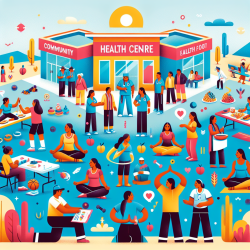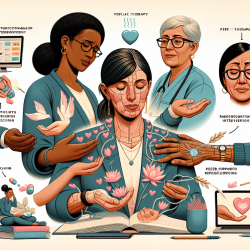Introduction
In the realm of healthcare, particularly for underserved communities, innovative approaches are crucial to bridge the gap between patients and healthcare services. A recent study titled "Community-based outreach associated with increased health utilization among Navajo individuals living with diabetes: a matched cohort study" provides valuable insights into how community-based interventions can enhance healthcare utilization. This blog explores the outcomes of this research and offers guidance for practitioners looking to implement similar strategies.
The COPE Program: A Brief Overview
The Community Outreach and Patient Empowerment (COPE) program is a structured intervention designed to address health disparities in the Navajo Nation. By integrating Community Health Representatives (CHRs) into healthcare teams, the program aims to improve healthcare utilization among individuals living with diabetes. The COPE program focuses on three main strategies:
- Training CHRs in health topics and behavior change techniques.
- Developing patient coaching materials for home use.
- Enhancing communication between patients and clinic-based teams.
Research Findings
The study conducted an observational cohort analysis using data from 2010 to 2014, involving 173 COPE enrollees and 2880 controls. The results demonstrated that COPE participants experienced a modest yet statistically significant increase in healthcare utilization compared to non-participants. Key findings include:
- A 2.5% increase in total healthcare utilization per patient per quarter.
- A 3.2% increase in primary care visits.
- A 6.3% increase in counseling and behavioral health services.
- A 9.0% increase in pharmacy visits.
These outcomes suggest that structured community outreach can effectively enhance patient engagement with healthcare services.
Implications for Practitioners
For practitioners seeking to improve healthcare utilization in their communities, the COPE program offers a replicable model. Here are some actionable steps based on the research findings:
- Integrate CHRs into Healthcare Teams: Leverage the skills of CHRs to provide culturally tailored support and bridge communication gaps between patients and healthcare providers.
- Focus on Training and Resources: Equip CHRs with the necessary training and resources to deliver effective health coaching and support.
- Enhance Community-Clinic Linkages: Foster stronger connections between community outreach programs and clinic-based care to ensure seamless patient navigation and support.
Encouraging Further Research
While the COPE program has shown promising results, further research is needed to explore its applicability in different contexts and populations. Practitioners are encouraged to conduct studies that assess the long-term impact of community-based interventions on healthcare utilization and patient outcomes.
To read the original research paper, please follow this link: Community-based outreach associated with increased health utilization among Navajo individuals living with diabetes: a matched cohort study.










